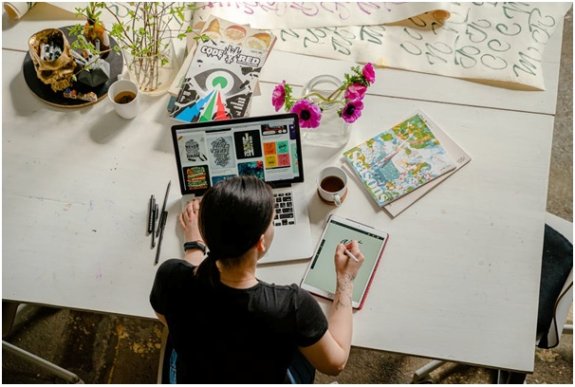Are you trying to decide if you should build your own artist website?
Building a website is a great idea, especially if you’re self-employed. Your website will help you to market yourself, build your brand, and show off your art portfolio. Best of all, it won’t cost much to set up and host a basic website using one of many website builders.
What makes a great artist website? What should you include, and what be the best way to design it?

Table of Contents
Feature a Blog News Section
Having a blog news section on your artist’s website is key for allowing those who subscribe to your website to stay in the loop on all the exciting news your work entails. A blog news section will display relevant announcements that will keep artists and visitors informed.
Establish a news section in a blog-style format that will allow you to update with new announcements. Search for NFT art here to make your blog unique. Finally, publish posts related to your art portfolio that will showcase your skills and promote yourself as an artist.
To conclude, a blog news section is an imperative component of a personal website for artists.
Link to Your Social Media Account
Linking to your social media accounts is an easy way to grow your audience and reach potential customers, employers, followers, or even admirers. To get started on your artist website, begin with gathering your artwork, such as an art portfolio, resumes, and any other artwork you may want to include. You’ll also need to set up a domain name, choose a web hosting service, and design your website.
Once you have selected the layout and design you will need to create images for each piece of artwork, add some text, and include your contact information and social media links. Once you have completed this process, it is time to link to your social media accounts and promote and spread the word about your artwork!
Make Your Artist Website User-Friendly
Make sure the design elements are organized in an easy-to-navigate format so that your website users can access their desired content quickly. Choose fun colors or fonts and adjust the visuals to make sure the website is not overwhelming.
Utilize shortcuts or tabs for navigation, contact forms that are easy to fill out plus information that is succinct and to the point. An artists website needs to be organized in a way that makes it easy for viewers to quickly explore the content you have to offer.
Your Guide to Creating an Artist Website
Having your own artist website as a portfolio is essential for those in the creative arts to have a leg up. Having a sleek, organized, and professional-looking portfolio will give you the credibility and representation you need to take your career to the next level. Take the time today to craft your own artist website as a portfolio, it will pay off in the end.
Found this interesting? Read the rest of our blog and learn more!




